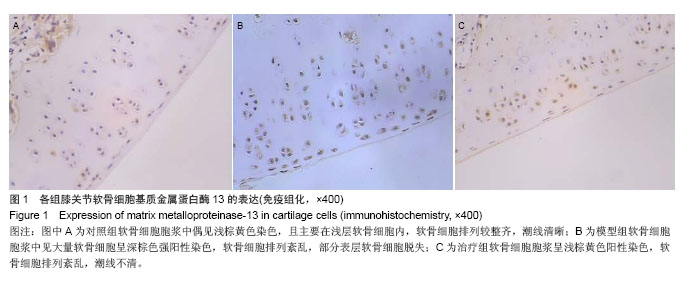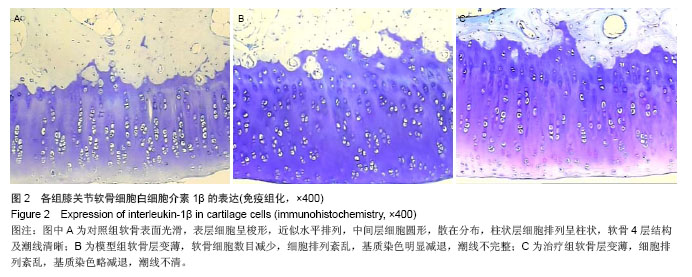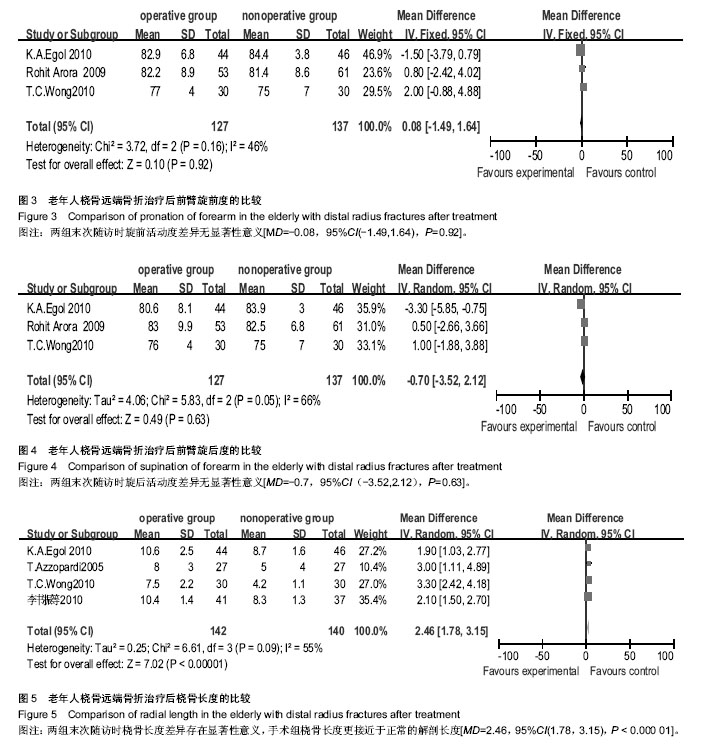| [1]熊勇,张照庆,夏数数,等.改良伸直位固定法建立兔膝骨性关节炎模型的研究[J].湖北中医药大学学报,2010,12(5):19-21.
[2]Mankin HJ, Dorfman H, Lippiello L,et al.Biochemical and metabolic abnormalities in articular cartilage from osteo-arthritic human hips. II. Correlation of morphology with biochemical and metabolic data.J Bone Joint Surg Am. 1971; 53(3):523-537.
[3]Berenbaum F.New horizons and perspectives in the treatment of osteoarthritis.Arthritis Res Ther. 2008;10 Suppl 2:S1.
[4]Lotz M.Cytokines in cartilage injury and repair. Clin Orthop Relat Res.2001;(391 Suppl):S108-115.
[5]Malemud CJ, Islam N, Haqql TM. Pathophysiological mechanisms in osteoarthritis lead to novel therapeutic strategies.Cells Tissues Organs.2003;174(1-2):34-48.
[6]Fell HB,Jubb RW. The effect of synovial tissue on the breakdown of articular cartilage in organ culture. Arthritis Rheum.1977;20(7):1359-1371.
[7]Schwab W, Schulze Tanzil G, Mobasheri A,et al. Interleukin Ibeta induced expression of the urokinase-type plasminogen activator receptor and its co-localization with MMPs in human articular chondrocytes. Histol Histopathol. 2004;19(1): 105-112.
[8]Wood DD, Ihrie EJ, Dinarello CA,et al.Isolation of an interleukin-1-like factor from human joint effusions.Arthritis Rheum. 1983;26(8):975-983.
[9]Clutterbuck AL, Smith JR, Allaway D,et al.High throughput proteomic analysis of the secretome in an explant model of articular cartilage inflammation.J Proteomics. 2011;74(5): 704-715.
[10]Abramson SB.Nitric oxide in inflammation and pain associated with osteoarthritis.Arthritis Res Ther. 2008;10 Suppl 2:S2.
[11]杨丰建,俞永林,夏军,等.基质金属蛋白酶-1/13与信号通路激酶ERK1/2 在兔骨关节炎软骨中的表达[J].老年医学与保健,2007, 13(6):338-342.
[12]Fernandes JC, Martel-Pelletier J, Lascau-Coman V,et al.Collagenase-1 and collagenase-3 synthesis in normal and early experimental osteoarthritic canine cartilage: an immunohistochemical study.J Rheumatol. 1998;25(8): 1585-1594.
[13]吴洪斌,杜靖远,胡勇,等.兔前交叉韧带切断骨关节炎模型中MMP-1,MMP-13及TIMP-1的mRNA表达研究[J].中华风湿病杂志,2002,7(3):169-173.
[14]Rossa C Jr, Liu M, Patil C,et al.MKK3/6-p38 MAPK negatively regulates murine MMP-13 gene expression induced by IL-1beta and TNF-alpha in immortalized periodontal ligament fibroblasts.Matrix Biol. 2005;24(7):478-488.
[15]Kobayashi M,Squires GR,Mousa A,el al. Role of interleukin-1 and tumor necrosis factor alpha in matrix degradation of human osteoarthritic cartilage.Arthritis Rheum.2005;52(1): 128-135.
[16]Seguin CA,Bernier SM. TNFalpha suppresses link protein and typeⅡ collagen expression in chondrocytes: Role of MEK1/2 and NF-kappaB signaling pathways. Cell Physiol. 2003;197(3):356-369.
[17]Revenaugh MS.Extracorporeal shock wave therapy for treatment of osteoarthritis in the horse: clinical applications. Vet Clin North Am Equine Pract. 2005;21(3):609-625.
[18]于铁成,陈小英,董世那,等.冲击波治疗膝关节骨性关节炎的单盲平行模拟对照临床研究[J].中国老年学杂志,2008,28(13): 1301-1303.
[19]Moretti B, Iannone F, Notarnicola A,et al.Extracorporeal shock waves down-regulate the expression of interleukin-10 and tumor necrosis factor-alpha in osteoarthritic chondrocytes.BMC Musculoskelet Disord. 2008;9:16.
[20]Zhao Z, Ji H, Jing R,et al.Extracorporeal shock-wave therapy reduces progression of knee osteoarthritis in rabbits by reducing nitric oxide level and chondrocyte apoptosis.Arch Orthop Trauma Surg. 2012;132(11):1547-1553.
[21]王明波,邢更彦,李志国,等.体外冲击波对体外培养兔关节软骨细胞增殖及bFGF、CTGF表达的影响[J].实用医学杂志,2011,27(7): 1160-1163.
[22]Mammoto A, Ingber DE.Cytoskeletal control of growth and cell fate switching.Curr Opin Cell Biol. 2009;21(6):864-870. |



.jpg)